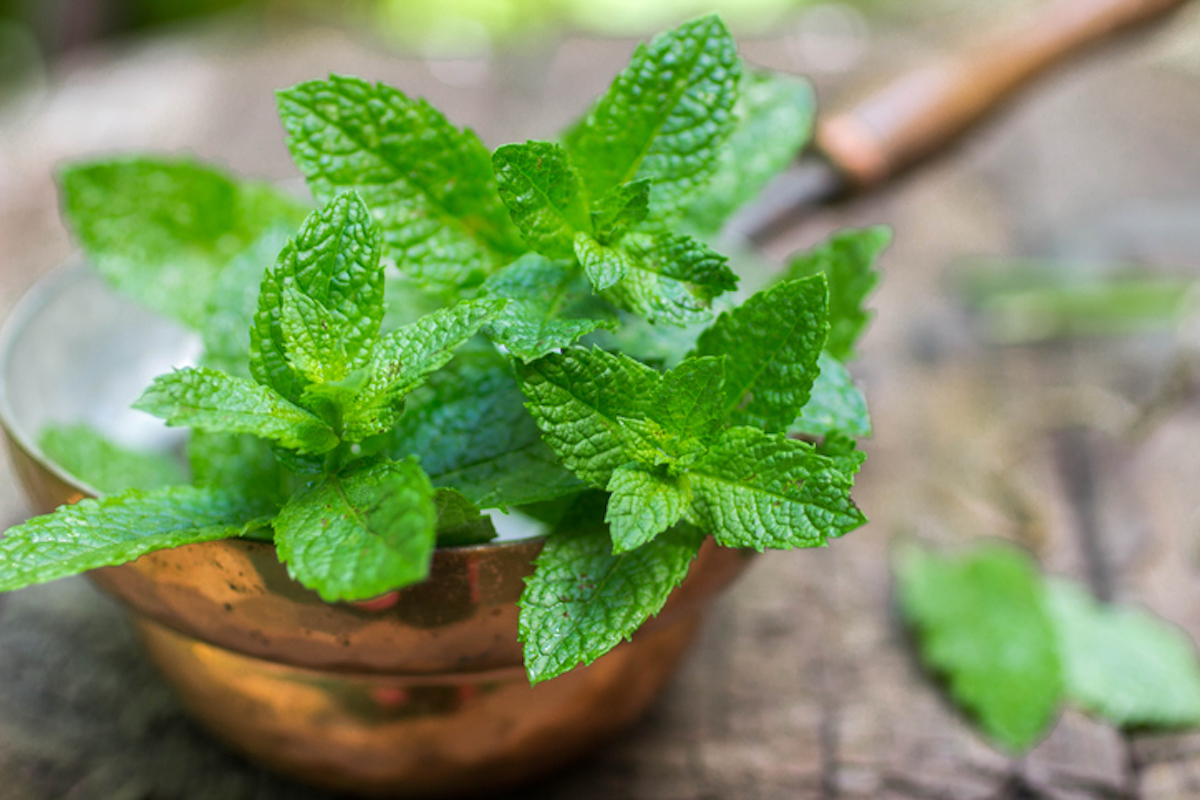Superfoods that will keep your memory sharp
Discover top superfoods like blueberries, whole grains, dark chocolate, turmeric, and sage to enhance brain health and memory retention.
Mint leaves have been known since ages for their therapeutic values and have been used to treat digestive ailments, gastric issues and extensively used by ayurveda practitioners.

Fresh mint on a wooden table. The rustic style. Selective focus (Picture: iStock)
Humble herb, Pudina or mint, commonly used in every Indian kitchen, is a superfood with endless medicinal values and a summer favourite of almost every kitchen in this part of the subcontinent. Known for its cooling effect, it is used extensively not only in food preparations but also as a medicine to ward off the impact of the sultry summer heat of India.
The long spell of Indian heat is also associated with ‘summer-special foods’ prepared with herbs and ingredients known for their cooling effect. These ‘summer-special foods’ have certain special herbs, and natural ingredients which not only help beat the heat but also treat us naturally. Pudina is one such humble herb which is used extensively in Indian kitchens during summer months not only to satiate the taste buds but also has immense medicinal benefits.
Every Indian home, especially the north Indian home is familiar with that peculiar smell of these humble Pudina leaves-available with every local vegetable vendor, crushed along with many more ingredients like raw mango, chilly, coriander, etc and turned into a fine paste. This paste called ‘chutney’ or Indian Pasto or a dip is a common must-have during summers in the Indian kitchen along with the meals.
Advertisement
Mint leaves have been known for ages for their therapeutic values and have been used to treat digestive ailments and gastric issues, and are extensively used by Ayurveda practitioners.
From boosting digestion to keeping your breath fresh for long, mint is packed with a number of benefits that make it more than just a mocktail, chutney or raita ingredient.
The therapeutic value of mint leaves
Mint is commonly used to-
Aid Digestion- Menthol is found in abundance in mint leaves. Menthol has antiseptic and antibacterial properties that relieve indigestion and also soothe an upset stomach. Mint is considered to be a great appetizer. The herb helps to activate the salivary glands which stimulate the secretion of digestive enzymes.
Mint is also widely consumed to relieve the symptoms of irritable bowel syndrome (IBS).
Treat Asthma- Mint leaves have anti-inflammatory properties that relieve congestion.
Treat Common Cold- Pudina or mint is a very commonly suggested herb by Ayurveda practitioners to treat the common cold. Steam inhalation with a few freshly plucked mint leaves is considered to give instant relief.
Treat Headache- Due to its potent anti-inflammatory properties, mint extract is used in many balms and creams to relieve headaches.
Dental Care- We often come across toothpaste brands that promote the presence of mint oil in their products. This is because of the established qualities of mint in dental care.
Boost memory and combat stress- Mint oil is used in aromatherapy for stress management. Mint oil aroma is considered a great memory-booster.
How to consume mint?
The most common use of mint leaves is in the form of chutney. This was traditionally prepared with stone vessels in olden times but many households still prefer to prepare it that way.
Mint is commonly used in summer concoctions and cool drinks.
Mint leaves are also popularly used in mocktails and cocktails.
Mint is also used in Parantha, bread, and food preparations like pudina paratha, pudina paneer, pudina raita, etc.
So, enjoy this natural Superfood which is a great coolant to beat the heat with immense therapeutic value.
Advertisement